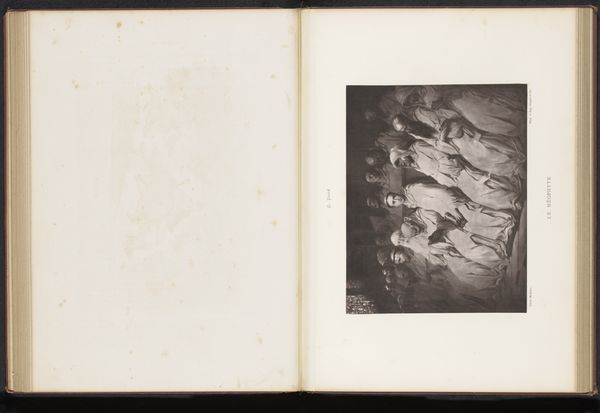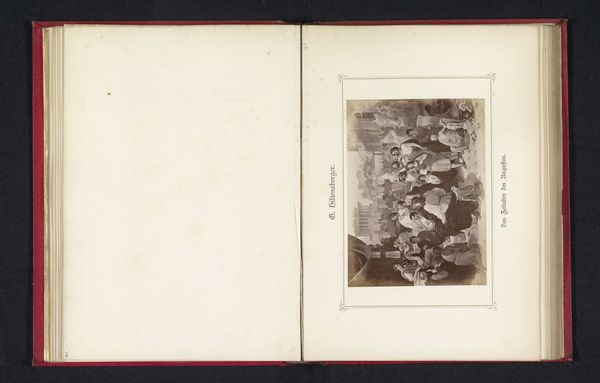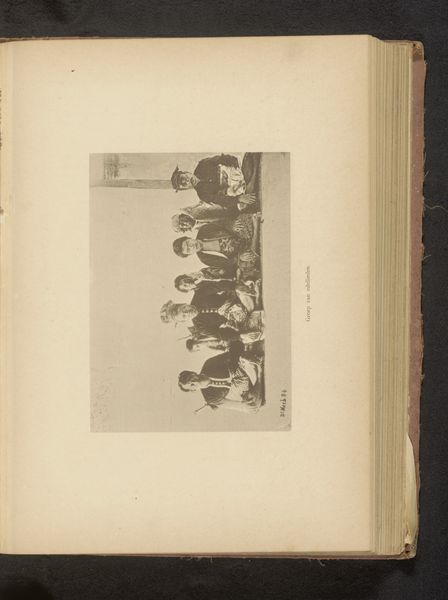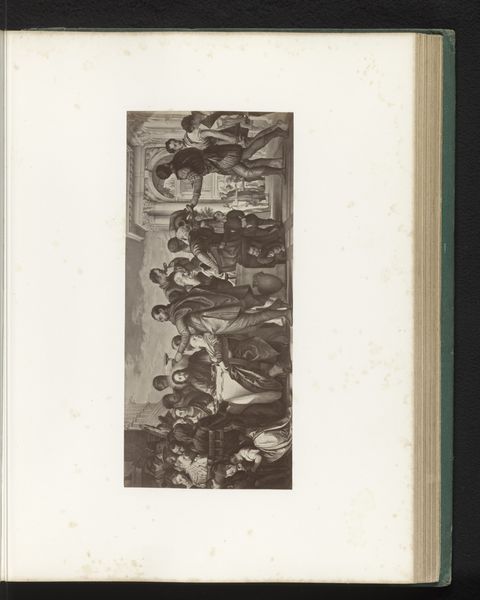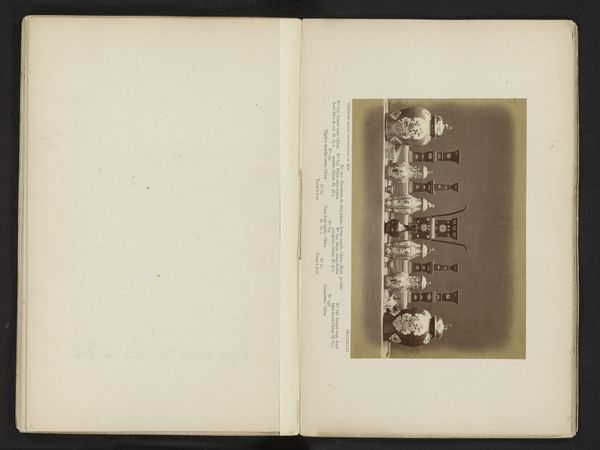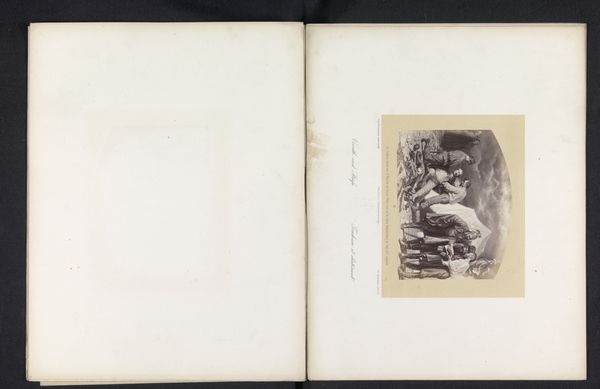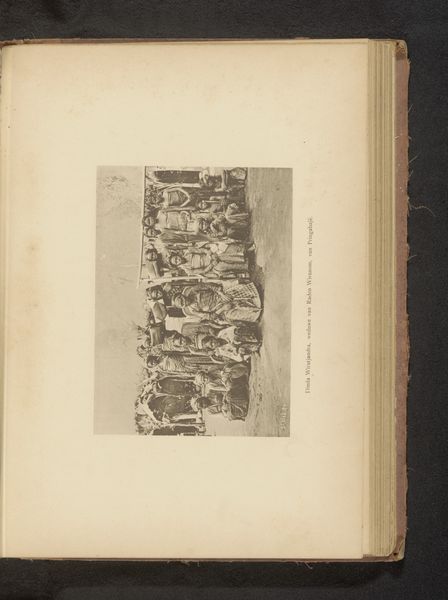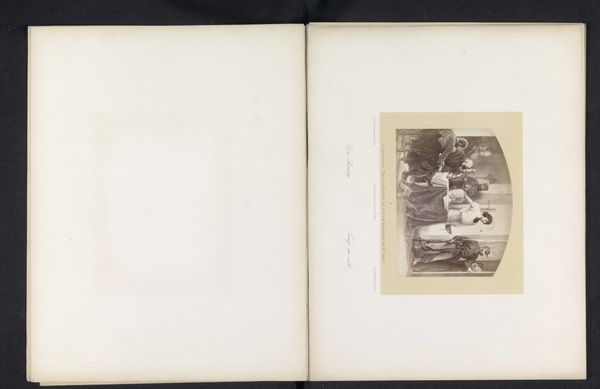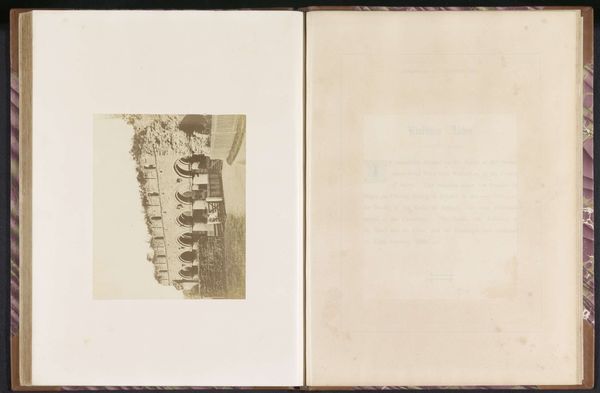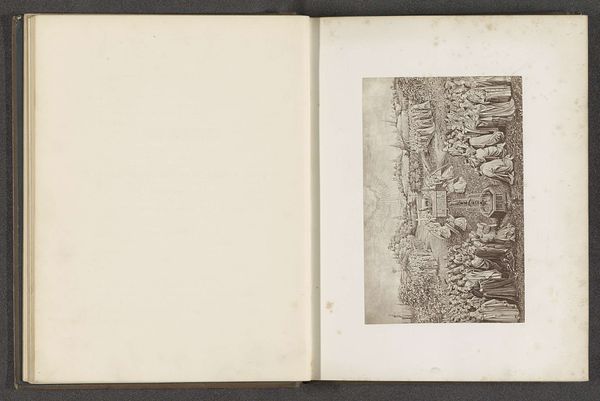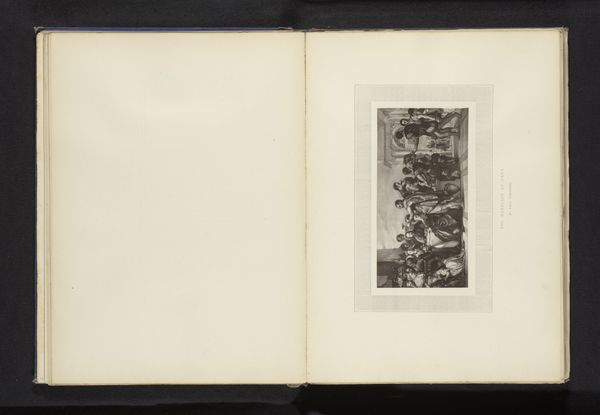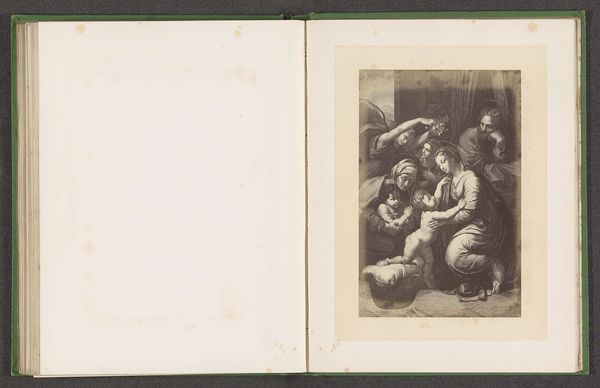
Fotoreproductie van een prent naar een schilderij, voorstellende de aanbidding der wijzen before 1869
0:00
0:00
#
aged paper
#
homemade paper
#
sketch book
#
hand drawn type
#
paper texture
#
personal sketchbook
#
hand-drawn typeface
#
sketchbook drawing
#
sketchbook art
#
design on paper
Dimensions: height 118 mm, width 135 mm
Copyright: Rijks Museum: Open Domain
Editor: This is a photographic reproduction of a painting or print depicting the Adoration of the Magi, created before 1869 by an anonymous artist. It's presented within a sketchbook, which I find interesting. The monochromatic palette and the aged paper give it a strong sense of history. What strikes you most about the composition? Curator: The photographic reproduction reduces the work to its basic formal components. Consider the vertical arrangement within the book's page; how does this affect your reading of the source painting's narrative and spatial logic? Are the figures harmoniously integrated, or do you detect a tension created by the confined dimensions? The starkness, the monochrome tones also encourage contemplation on the role of light and shadow—what impact does it create on the composition, devoid of color? Editor: The vertical compression definitely changes things. In the original, I imagine the eye would move around more freely. Here, I feel forced to read it top to bottom. The light and shadow give it a dramatic feel, like a stage production almost. Curator: Precisely. The conversion to monochrome and the specific orientation alter our perception of depth and pictorial space, drawing attention to the flatness of the image itself. Notice how this contrasts with the three-dimensional depth often conveyed in paintings depicting the Adoration. Could we argue that this photographic rendering reframes our understanding, inviting reflection upon the means of representation rather than solely upon the biblical subject? Editor: That's a really interesting point. It makes me think about how the medium changes the message. I appreciate your insight on how this photo redirects us from just the religious scene to the form itself. Curator: And that formal awareness allows us to grasp how different formats create separate ways of seeing and comprehending.
Comments
No comments
Be the first to comment and join the conversation on the ultimate creative platform.
